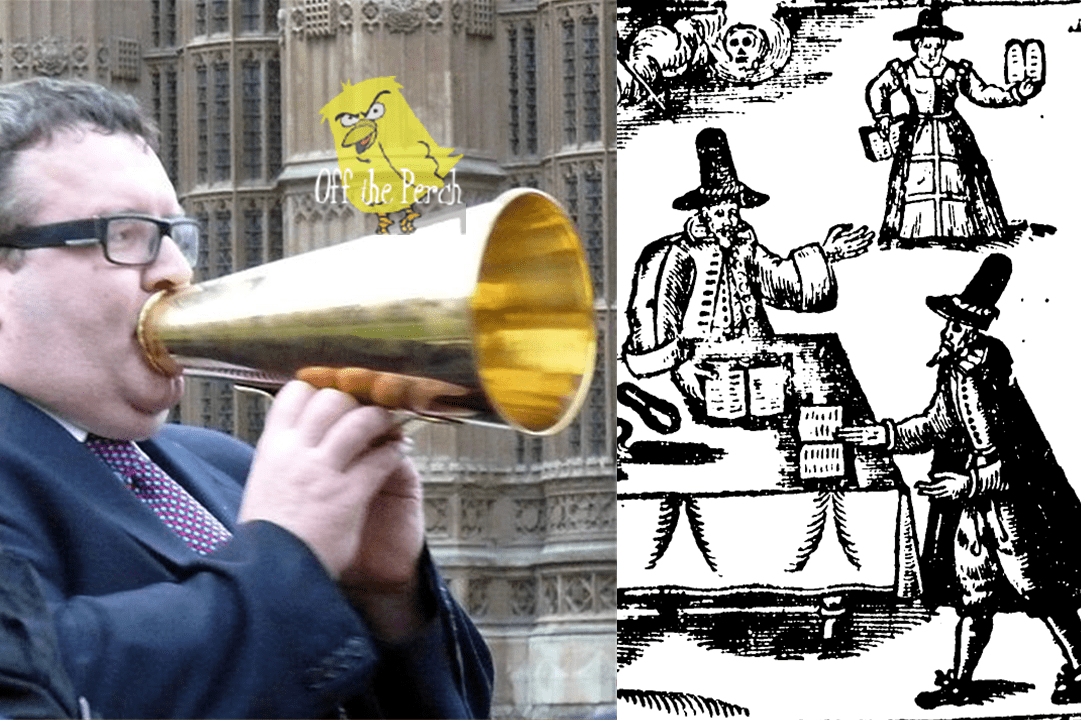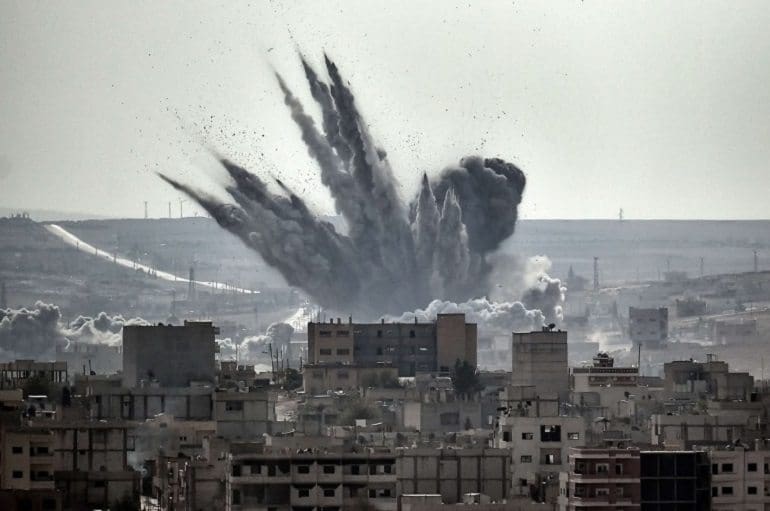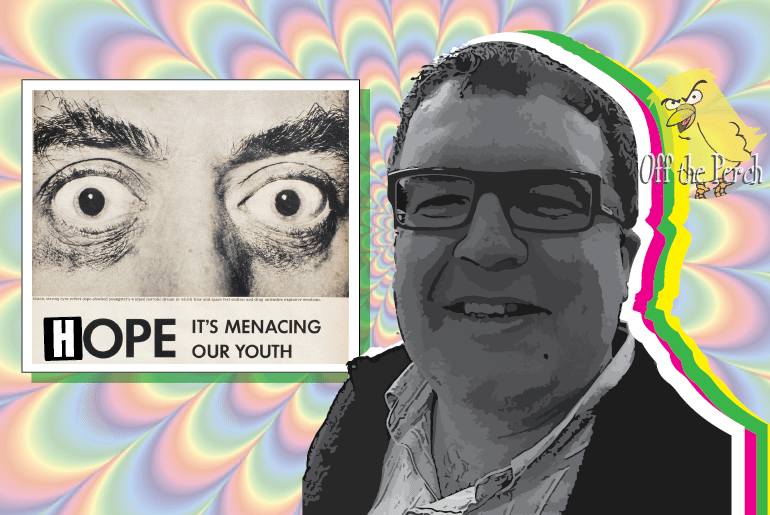Above is Part One of a video interview with Baltasar Garzón, the renowned jurist, which includes observations about the attempted prosecutions of Bush officials regarding torture allegations and war crimes – and how the US secretly pressurised the Spanish Government to ensure no such prosecutions took place. (Part Two of the video is given below.)
Part 4: ‘The Other Chilcot’
The US strategy from the beginning of the second Iraq War has been to deflect criticism and prosecution by blaming others. The war began with a lie: that Saddam Hussein had WMD (the true reason for invasion was, of course, oil and an attempt at geo-strategic takeover). During the course of the war the US government ensured it was not charged for war crimes or torture.
This article – the last in the series – concludes with a summary of the main charges of war crimes and torture that could be raised against the Bush administration if ever there was an official investigation (which is highly unlikely).
The attempt to prosecute the US government
The Obama administration worked closely with Republicans during President Obama’s first few months in office to protect Bush administration officials facing an overseas criminal investigation for their involvement in establishing policies that condoned the use of torture.
A confidential 17 April 2009 cable sent from the US embassy in Madrid and obtained by WikiLeaks detailed how the Obama administration leaned on the Spanish government to derail this potential prosecution by Baltasar Garzón .
How did this happen?
In March 2009 Baltasar Garzón considered whether Spain should allow charges to be filed against former officials from the United States government under George W. Bush for offering justifications for torture.
However, the investigation was subsequently assigned to Judge Eloy Velasco, who chose not to pursue it (surprise, surprise!), stating that Spain could not investigate the case unless the US agreed it would not conduct its own investigation. In a US diplomatic cable published by WikiLeaks it was revealed that Chief Prosecutor Javier Zaragoza had intended to argue that the case should not be assigned to Judge Garzón.
In a later cable it was stated that Garzón was “forced to give up” the investigation. It was also revealed that Zaragoza had strategised how to force Garzón to give up the case – namely:
* On April 16 2009 the Spanish Attorney General, Cándido Conde-Pumpido, stated that he thought the Spanish investigative magistrate should drop the consideration of charges against the six men.
* On April 17 2009 Conde-Pumpido said his office would not support Judge Baltasar Garzon’s ‘outrageous effort’ to prosecute six Bush Administration officials for their role in the US antiterror effort.
* On April 23 2009 Eloy Velasco took over responsibility for determining whether or not the six former Bush officials should face Spanish charges.
* On 29 April 2009 Garzón opened an investigation into an alleged “systematic programme” of torture at Guantánamo Bay, following accusations by four former prisoners. Similarly, the leaked cable indicated that the Chief Prosecutor intended to fight this investigation too, and that he feared “Garzón may attempt to wring all the publicity he can from the case unless and until he is forced to give it up.”
At the time The Guardian reported that Garzón had initiated a formal investigation into whether confessions from four former Guantanamo captives were the result of the use of abusive interrogation techniques. The four men – Hamed Abderrahman Ahmed, Lahcen Ikassrien, Jamiel Abdul Latif al Banna and Omar Deghayes – had previously faced charges in Spanish courts, based on confessions they made while in US custody. Their charges had been dropped, based on their claims that their confessions were false and the result of abusive interrogation techniques.
* On May 5 2009 Velasco formally requested the USA to indicate whether they were going to conduct a domestic inquiry into the six men’s conduct. (Spain’s principle of universal justice allows third party states to charge non-citizens and request their extradition only when their country of citizenship has not conducted its own investigation.)
* On May 20 2009 the New York Times reported that some Spanish legislators were proposing a law to strip investigating magistrates of the authority to pursue international human rights cases. This law, however, would not retroactively put an end to the progress of current cases but would halt the initiation of similar cases.
Andy Worthington, writing in the Huffington Post, gave an account of this story:
Zaragoza said he had challenged Garzón directly and personally on this latest case, asking if he was trying to drum up more speaking fees. Garzón replied he was doing it for the record only and would let it die. Zaragoza opined that Garzón, having gotten his headline, would soon drop the matter. In case he does not, Zaragoza has a strategy to force his hand. Zaragoza’s strategy hinges on the older case in which Garzón investigated terrorism complaints against some Guantanamo detainees. In connection with those earlier investigations, Garzón ordered the Spanish police to visit Guantanamo and collect evidence against the suspected terrorists. Zaragoza reasons that he can use this fact to embarrass Garzón into dropping this latest case by suggesting that Garzón in some sense condoned the U.S. approach to detainee issues circa 2004. Garzón took no action in 2004 when the suspects returned to Spain and reported to him their alleged mistreatment. Zaragoza said that if Garzón could not be shamed into dropping the case, then he would formally recommend Garzón do so and appeal if Garzón ignored him.
Numerous embassy cables published by Wikileaks centered on the progression of the case. US government intentions were summarised in a confidential cable, dated 1 April 2009. The summary was sent to the US State Department by the Madrid embassy.
The cable suggested that the US had intended to convince Spanish officials to interfere with the National Court’s judicial independence:
A Spanish NGO has requested that the National Court indict six Bush Administration officials for creating a legal framework that allegedly permitted torture. The NGO is attempting to have the case heard by Investigating Judge Baltasar Garzon, internationally known for his dogged pursuit of “universal jurisdiction” cases. Garzon has passed the complaint to the Prosecutor’s office so that they can determine if there is a legitimate case. Although he seemed displeased to have this dropped in his lap, Chief Prosecutor Zaragoza told us that in all likelihood he would have no option but to open the case. He said he did not envision indictments or arrest warrants in the near future. He would also argue against the case being assigned to Garzon. MFA and MOJ contacts told us that they are concerned about the case, but have stressed the independence of the Spanish judiciary. They too have suggested the case will move…
The six accused were former Attorney General Gonzales; David Addington, former chief of staff and legal adviser to the Vice President; William Haynes, former DOD General Counsel; Douglas Feith, former Under Secretary of Defense for Policy; Jay Bybee, former head of the DOJ Office of Legal Counsel; and John Yoo, a former member of Bybee’s.
The complaint alleged that the accused conspired with criminal intent to construct a legal framework to permit interrogation techniques and detentions in violation of international law.
The complaint described a number of US documents, including: a 28 December 2001 memorandum regarding US courts’ jurisdiction over Guantanamo detainees; a 7 February 2002 memorandum, saying the detainees were not covered by the Geneva Convention; a 13 March 2002 memorandum on new interrogation techniques; a 1 August 2002 memorandum on the definition of torture; a 27 November 2002 memorandum recommending approval of 15 new interrogation techniques; and a 14 March 2003 memorandum providing a legal justification for new interrogation techniques.
The complaint also cited a 2006 US Supreme Court case which it says held the February 2002 memo in violation of international law and President Obama’s Executive Order on ensuring lawful interrogations…
The complaint asserted Spanish jurisdiction by claiming that the alleged crimes committed at Guantanamo violated the 1949 Geneva Convention and its Additional Protocols of 1977, the 1984 Convention Against Torture or Other Cruel, Unusual or Degrading Treatment or Punishment, and the 1998 Rome Statute. The GOS [Government of Spain] is a signatory to all three instruments. The complaint cites Article 7 of the 1984 Convention Against Torture, which states that if a person accused of torture is not extradited to the nation that is bringing a case against him or her, then the competent authorities in the country where the person is should bring a case against him or her.
The cable concluded…
We do not know if the government would be willing to take the risky step of trying behind the scenes to influence the prosecutor’s recommendation on this case or what their reaction to such a request would be.
Here is Part Two of the Garzon video…
The war crimes allegations
This list of allegations is based partly on those raised by Chelsea Manning in a statement to her military tribunal, and partly on evidence published by her support network. The main charges relate directly to the 2003 Iraq War (as well as to the conflict in Afghanistan).
Charge #1. US authorities failed to investigate hundreds of reports of abuse, torture, rape and even murder by Iraqi police and soldiers, whose conduct appears to be systematic and normally unpunished. The “Iraq War Logs” published by WikiLeaks revealed that thousands of reports of prisoner abuse and torture had been filed against the Iraqi Security Forces. Medical evidence detailed how prisoners had been whipped with heavy cables across the feet, hung from ceiling hooks, suffered holes being bored into their legs with electric drills, urinated upon, and sexually assaulted.
Charge #2. The “Iraq War Logs” also revealed the existence of “Frago 242”, a US Army order implemented in 2004 not to investigate allegations of abuse against the Iraqi government. This order is a direct violation of the UN Convention Against Torture, which was ratified by the United States in 1994. The Convention prohibits the Armed Forces from transferring a detainee to other countries “where there are substantial grounds for believing that he would be in danger of being subjected to torture.” According to the State Department’s own reports, the US government was already aware that the Iraqi Security Forces engaged in torture.
Charge #3. The Guantanamo Files describe how detainees were arrested based on what the New York Times referred to as highly subjective evidence. For example, some poor farmers were captured after they were found wearing a common watch or a jacket that was the same as those also worn by al-Qaeda operatives. How quickly innocent prisoners were released was heavily dependent on their country of origin. Because the evidence collected against Guantanamo prisoners is not permissible in US courts the US State Department offered millions of dollars to other countries to take and try its prisoners.
According to a US diplomatic cable written on 17 April 2009, the Association for the Dignity of Spanish Prisoners requested that the National Court indict six former US officials for creating a legal framework that allegedly permitted torture against five Spanish prisoners at Guantanamo. However, “Senator Mel Martinez… met Acting FM [Foreign Minister] Angel Lossada… on April 15. Martinez… underscored that the prosecutions would not be understood or accepted in the US and would have an enormous impact on the bilateral relationship”.
Charge #4. US special-operations forces targeted militants without trial in secret assassination missions, and many more Afghan civilians were killed by accident than previously reported, according to the WikiLeaks Afghanistan war document dump.
Charge #5. The “Collateral Murder” video released by Wikileaks depicted the indiscriminate slaying of over a dozen people in the Iraqi suburb of New Baghdad, including two journalists working for Reuters. The Reuters news organisation was repeatedly denied its attempts to obtain the video through the Freedom of Information Act. The video, shot from an Apache helicopter gun-sight, clearly showed the unprovoked slaying of a wounded Reuters photographer and his rescuers. Two young children who were present in the attempted rescue were also seriously wounded. Ethan McCord, a US army soldier who can be seen in the video carrying wounded children to safety, has said that whoever revealed this video is a “hero.” An internal US military investigation concluded that the incident was consistent with the military’s ‘Rules of Engagement’.
Charge #6. There is (despite US government claims to the opposite) an official tally of civilian deaths in Iraq and Afghanistan. Even though the Bush and Obama Administrations maintained publicly that there was no official count of civilian casualties, the Iraq and Afghanistan War Logs showed that this claim was false. Between 2004 and 2009 the US government counted a total of 109,000 deaths in Iraq, with 66,081 classified as non-combatants. However, a respected British medical journal published a set of figures indicating not just thousands of Iraqi casualties but closer to a million – a genocide in both name and fact, that is only now becoming apparent.
Of course, there is no ‘Other Chilcot’, so these charges will not be examined. But the apparently evident conclusion is that democracy in the USA is an illusion and America’s invasion of Iraq was an obscenity.
Feature image via Flickr Creative Commons




![A zoo in England is letting ginger-haired people in for free [IMAGE]](https://www.thecanary.co/wp-content/uploads/2016/08/Screen-Shot-2016-08-10-at-12.09.48-PM.png)








